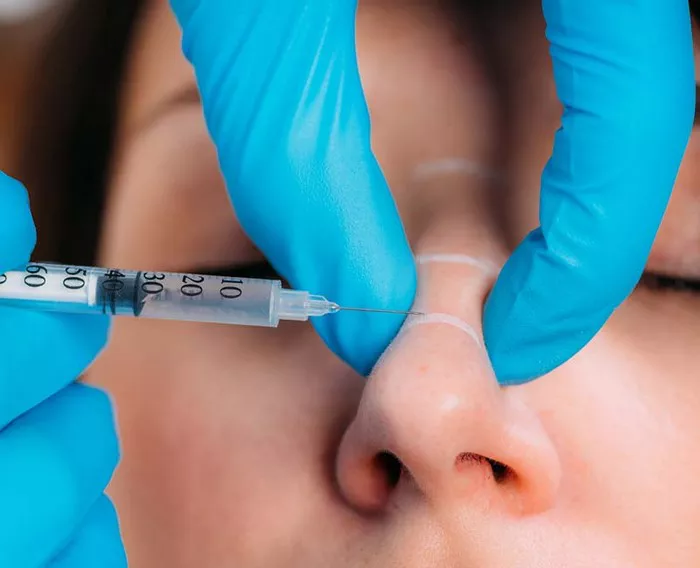In today’s society, cosmetic surgery has become increasingly popular and accessible. One procedure that is often sought after is rhinoplasty, commonly known as a nose job. Rhinoplasty can enhance one’s facial appearance and improve self-confidence. However, there are important factors to consider, with age being a crucial determinant. In this article, we will explore the minimum age requirements for getting a nose job and delve into the considerations that come into play.
Understanding Rhinoplasty
Rhinoplasty is a surgical procedure that involves reshaping or resizing the nose. It is performed for both aesthetic and functional reasons. Some individuals seek rhinoplasty to alter the size, shape, or symmetry of their nose, while others may require it to correct breathing difficulties or repair nasal deformities caused by trauma or birth defects.
Age Restrictions and Developmental Factors
The question of the minimum age to undergo a nose job is complex, as it depends on several factors. The primary consideration is the stage of physical development that an individual has reached. The human nose continues to grow and develop until the late teenage years or early twenties. Performing rhinoplasty before the completion of nasal growth can lead to undesirable results, as changes in nasal structure may occur as the individual matures.
Most reputable plastic surgeons recommend waiting until the late teens for females and early twenties for males before considering rhinoplasty. By this time, most individuals have completed their nasal growth, ensuring that the results of the procedure will be long-lasting and harmonious with their overall facial features. Surgeons generally prefer to work with patients who have a stable and mature physical foundation, which helps achieve optimal outcomes.
Psychological and Emotional Maturity
Apart from physical development, psychological and emotional maturity also play a significant role in determining an appropriate age for rhinoplasty. Undergoing any form of cosmetic surgery involves careful consideration and realistic expectations. It is crucial for individuals to have a mature understanding of the procedure, its risks, recovery process, and potential outcomes.
Teenagers, in particular, may be susceptible to societal pressures and unrealistic beauty standards. They might seek rhinoplasty as a quick fix to address self-esteem issues or social acceptance. However, it is essential to approach these desires with caution. Plastic surgeons often evaluate the psychological readiness of younger patients before proceeding with rhinoplasty. They may involve parents or guardians in the decision-making process to ensure that the motivations behind seeking surgery are healthy and well-founded.
Functional Considerations
While aesthetic improvements are often the primary driver for rhinoplasty, functional considerations should not be overlooked. Some individuals may require nasal surgery to correct breathing difficulties caused by structural abnormalities or injury. In such cases, the minimum age requirements may differ, and the decision to proceed with surgery would depend on the severity of the functional impairment.
It is worth noting that functional rhinoplasty, aimed at addressing breathing difficulties, may sometimes be performed earlier than purely cosmetic procedures. This is because functional issues can significantly impact an individual’s quality of life and overall health. The timing of the surgery will be determined by medical professionals who specialize in nasal and sinus disorders.
Potential Risks and Complications
Like any surgical procedure, rhinoplasty carries inherent risks and potential complications. These risks can vary depending on the patient’s age, health status, and surgical technique employed. It is essential to discuss these risks thoroughly with a qualified plastic surgeon during the consultation phase.
For younger patients, there may be additional concerns regarding healing and long-term stability. The nose continues to develop after surgery, albeit at a slower pace. Surgeons take this into account when planning the procedure and aim to create results that will age gracefully with the patient.
Consultation and Professional Guidance
The decision to undergo rhinoplasty should never be taken lightly, regardless of age. It is crucial to seek professional guidance from a qualified plastic surgeon who specializes in facial procedures. During the consultation process, the surgeon will assess factors such as physical development, emotional maturity, and functional considerations to determine if the individual is a suitable candidate for rhinoplasty.
The surgeon will conduct a thorough examination of the nasal structure and discuss the patient’s goals and expectations. They will explain the procedure, its potential risks, and the recovery process. This consultation serves as an opportunity for both the patient and the surgeon to establish open communication and trust.
Conclusion
Determining the minimum age for rhinoplasty requires careful consideration of several factors, including physical development, emotional maturity, and functional considerations. Most reputable plastic surgeons recommend waiting until the late teens or early twenties to ensure that nasal growth has completed. However, each case is unique, and it is essential to consult with a qualified professional who can evaluate individual circumstances.
Rhinoplasty can be a life-changing procedure when performed at the right time and for the right reasons. By approaching it responsibly and seeking appropriate guidance,


